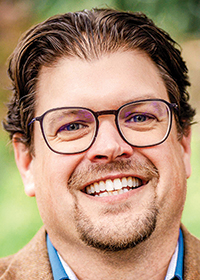Heartland revs opportunity engine
by April 25, 2024 1:26 pm 281 views

At Heartland Forward, we advance economic success, being a resource to state and local governments in four focus areas: innovation and entrepreneurship, human capital and workforce development, health and wellness and regional competitiveness.
We anticipate our research, programs and policy will transform the heartland, making it THE place to start a business and secure startup capital, educate and train the next generation of workers, live long and active lives and drive the world’s largest economy. It may seem ambitious, but transformational visions always are.
Heartland Forward focuses the central 20 states of the U.S. We acknowledge the need for high-quality infrastructure, such as transportation networks, for example, and given this issue’s theme, we are tracking the evolution of specific industries like automotive manufacturing into hybrid and all-electric vehicles, development of aerial technologies and aerospace manufacturing and, of course, advanced manufacturing techniques applied to bicycle manufacturing. (You can read more about these trends in our last couple of issues of the Most Dynamic Metropolitans (MDM) reports found on our website.)
Over the last month, I have engaged in conversations around economic development and place-based development strategies with academics and policymakers at the city, state and federal levels. Two observations have stuck with me from these conversations:
First, recent research predicts that hybrid and EV production will only reinforce the existing distribution of vehicle manufacturing despite the innovation and new technologies required to build these machines. For example, we document in MDM ’23 that the collocation of Samsung SDI’s latest battery manufacturing facility in Kokomo, Ind., resulted from a partnership with Stellantis, whose transmission facility has operated there since 1956. In 2022, we noted that some of the

most improved cities post-pandemic were based in the heartland and were historically automotive towns that experienced investment and growth due to plant expansions, places such as Springfield, Ohio (Honda Automotive) and Columbus, Ind., (near Toyota Motor Manufacturing and Subaru of Indiana Automotive, among others).
Second, many who relocated to smaller, more remote communities during the pandemic have reversed their migration. That is, they have moved back to (or near) the city they came from. Some may have to return to the office a few days a week, while others miss the amenities and lifestyle in urban places. Regardless, individuals who didn’t move again are either attached to the place through business ownership or family roots or enjoy the natural and built amenities not available in cities.
These observations lead me to a couple of profound conclusions. First, the clustering of automotive manufacturing supply chains reflects fundamental economic principles that encourage profitability and efficiency. In other words, building the battery plant next to existing automotive manufacturing is cost-effective for both manufacturers. By extension, the next generation of transportation is likely to emerge from those places that are already in transportation manufacturing.
Second, the heartland is diverse, with big cities and rural landscapes; it’s home to Fortune 1, 10, 100 and 500 companies and Main Street businesses run by individuals (and maybe a part-time high school student or two). It’s too early to know the enduring migration trends in the post-pandemic era. Still, it is exciting to see signs of flourishing in the heartland: growth in entrepreneurship and startup capital availability, suggesting opportunity is rising here.
Editor’s note: Dave Shideler, chief research officer, manages the “think” at Heartland Forward, a think-and-do tank in Bentonville that conducts research on and pilots new models of economic development strategies. The opinions expressed are those of the author.
